The Legend of the Selkies | Ultimate Mythology Blog – Top Selkie Facts
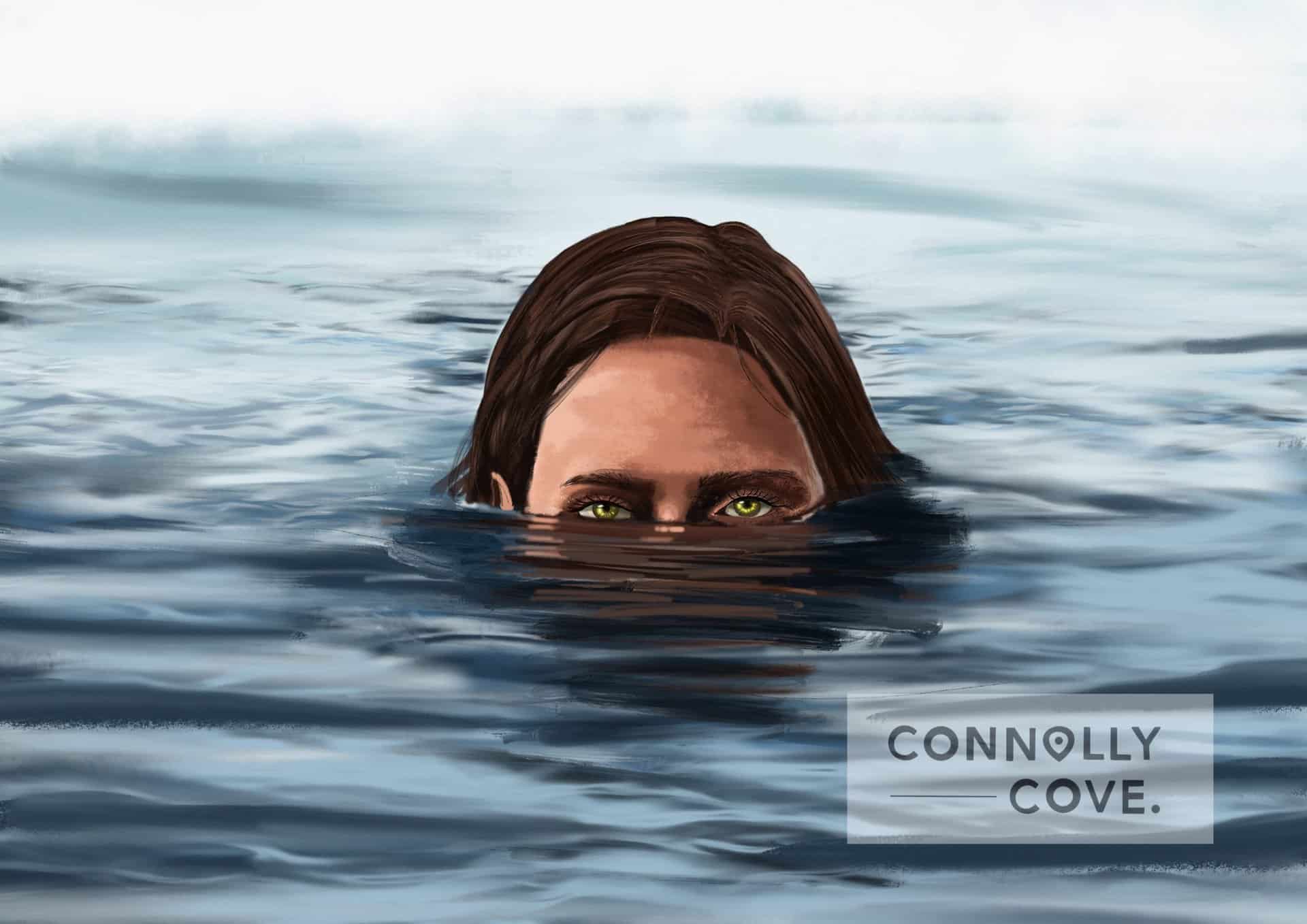
Updated On: April 21, 2024 by Ciaran Connolly
Perhaps one of the most notable mythical tales in Irish and Scottish mythology is the Legend of the Selkies, who are also called Seal Folk. They are mythological beings capable of changing from seal to human form by shedding their skin.
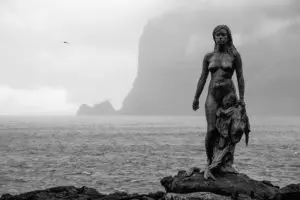
Together, we will embark on a journey to unravel the layers of mystery surrounding the Selkies in Irish folklore and mythology. Join us as we delve into the origins of these enchanting creatures, their role in the cultural and emotional landscape of Ireland and beyond, and the enduring fascination they continue to evoke.
Table of Contents
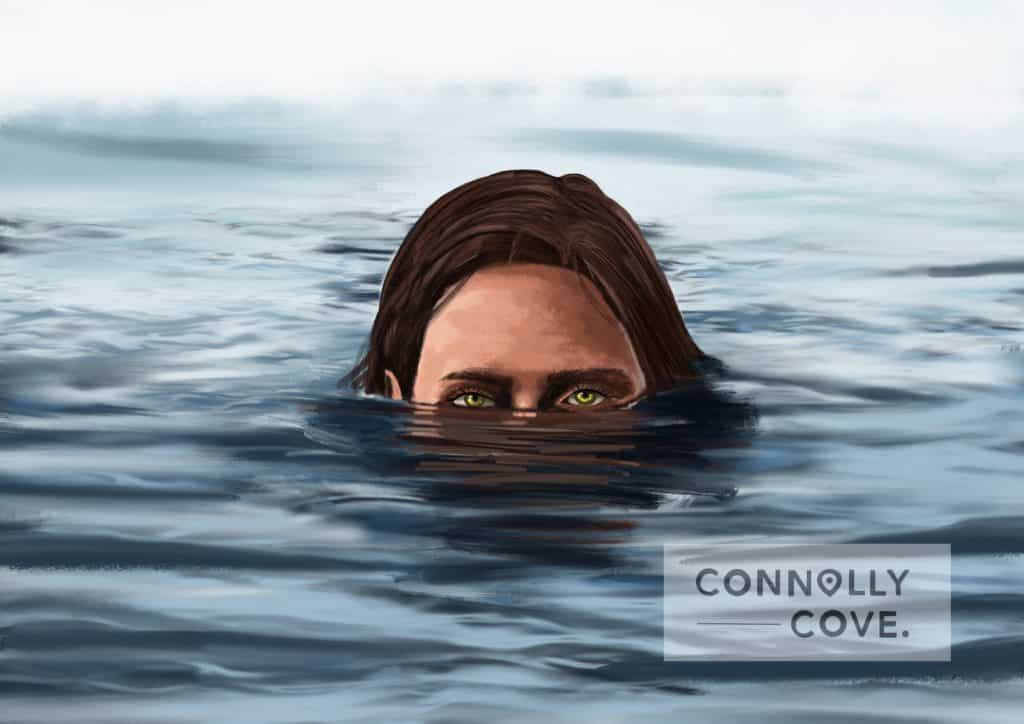
Before we delve deep into the Legend of the Selkies, we must first ask ourselves what are Selkies? The Selkie myth is Ireland’s and Scotland’s take on a fabled marine creature, similar to mermaids, sirens and swan maidens in other cultures.
It is a creature that takes the form of a seal in the water but is able to take off the seal skin on land and emerge as an irresistible human to land dwellers.
The Legend of the Selkies in Irish Mythology
Irish folklore is a realm where the boundaries between the ordinary and the extraordinary blur and the natural world interlace with the supernatural. These Irish tales of enchantment and mysticism have thrived for centuries.
Among the rich history of Irish folklore and mythology, the legend of the Selkies is a captivating and enigmatic story with elements of both beauty and melancholy. These mythical beings, who possess the ability to transform from seals into humans and back again, have charmed generations with their haunting songs, timeless tales, and elusive presence along the rugged coastlines of Ireland.
The Selkies, also known as “seal-folk” or “seal-wives,” are a prime example of the profound connection between the Irish people and the sea. The ocean, with its unpredictable tides and dark depths, has always held a special place in the hearts of the Irish, shaping their culture, livelihoods, and stories they tell.
Through the Selkies, the Irish have explored themes of love, loss, identity, and the eternal allure of the sea.
The Legend of the Selkies in Scottish Mythology
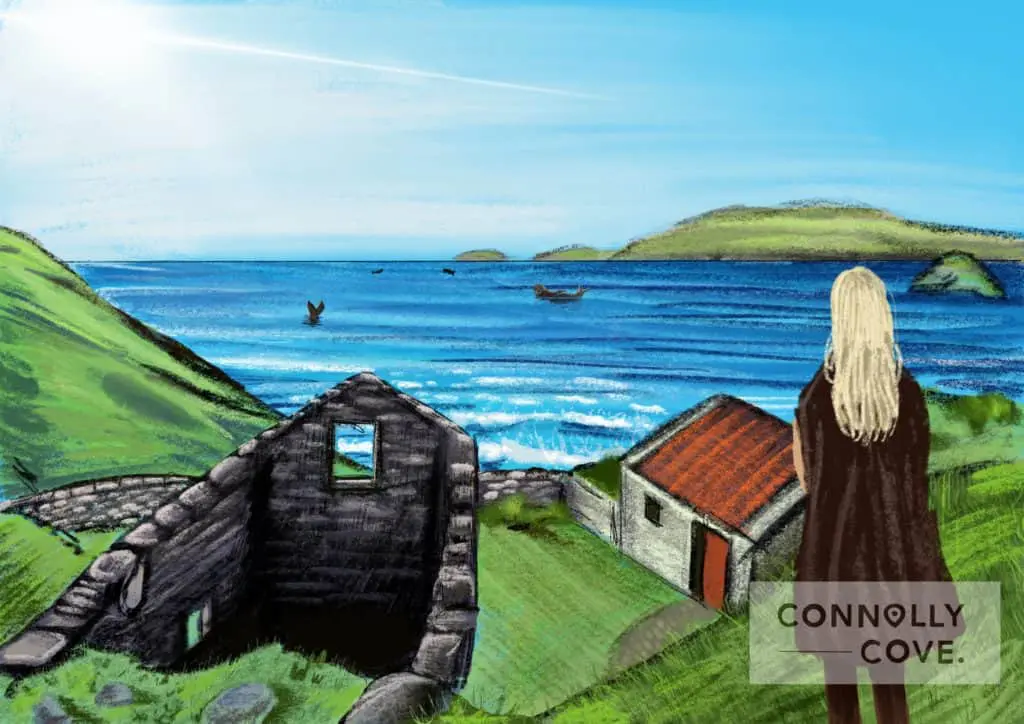
There is a famous legend in Scottish folklore that revolves around a selkie wife and her human lover. According to the legend of the Selkies, a man finds a female naked selkie on the seashore, so he steals her sealskin and compels her to become his wife. Throughout her captivity, the wife longs to return to her true home in the sea and always gazes longingly at the ocean.
Although she may appear to settle into her human life and may even have children with her human husband, as soon as she can find her selkie skin, she will immediately flee and return to the sea.
The story varies from place to place. Some say that she discovers the whereabouts of her skin, and others claim that one of her children comes upon it by accident. Some stories also say that she had already been married to a selkie husband. Whatever the case, as soon as she gets the sealskin, she returns to the ocean.
In some versions of the story of the Selkies, the Selkie revisits her human family on land once every year, but in most versions of the tale, she is never seen again by them.
One version of the legend of the Selkies states that although the Selkie wife was never seen again in human form, her children would sometimes witness a large seal approaching them and greeting them wistfully.
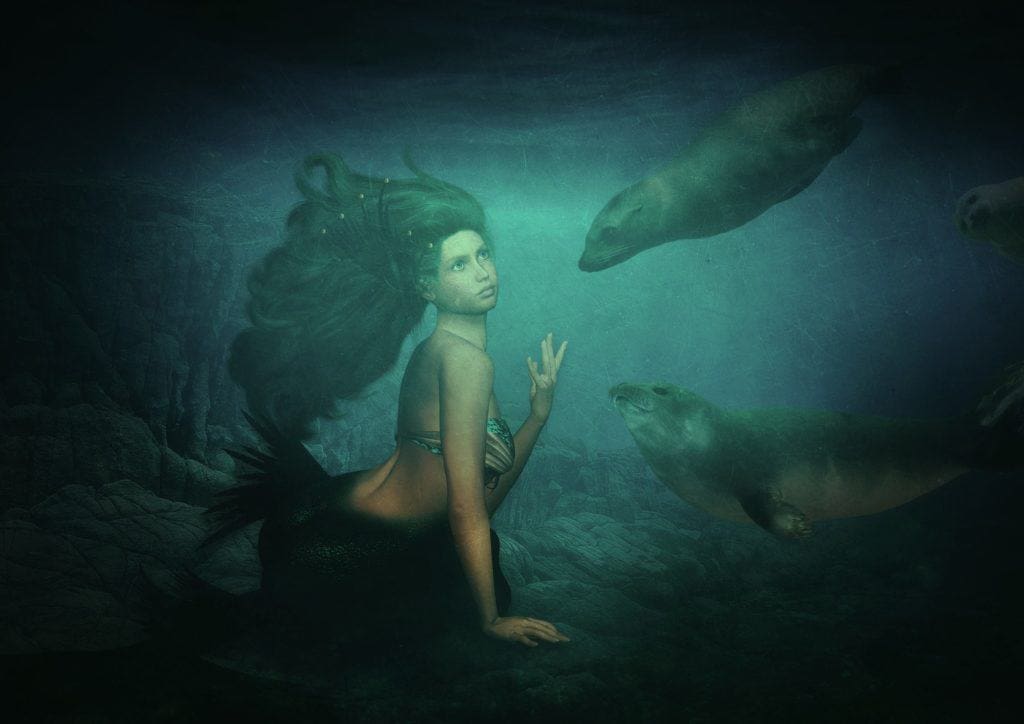
In the Legend of the Selkies, are Selkies Male or Female?
Although most stories revolve around female selkies, there are also tales of male selkies who are said to have very handsome human forms, as well as seductive powers that are irresistible to human women.
As the legend of the Selkies goes, the selkie men usually seek those who are dissatisfied with their lives, such as married women waiting for their fishermen husbands. If these women wished to contact the male selkies, they would shed seven tears into the sea.
The number seven shows up in selkie mythology once again, as some say that the selkie could only assume human form once every seven years because they are bodies that house condemned souls. They are also thought by some to be either humans who had committed sinful wrongdoing or fallen angels.
Similar Creatures in Mythology
Mermaid
A big difference between Selkies and Mermaids is that when selkies leave the water, they shed their seal skin and become fully human. This contrasts with the traditional mermaids who transform their seal tails into human legs.
Selkies are much milder in personality than their mermaid or siren counterparts. Many tales surrounding selkies involve them as prey, with female selkies captured by men, or predators, male selkies who lure lonely women to the sea.
However, there are also legends of Selkies and humans who love each other. Often, the selkie would sacrifice their human form to return to the sea to save a human who was drowning. Stories about selkies differ drastically on the relationships between individual selkies and humans.
The depiction of mermaids has changed drastically in media and mythology, from beautiful siren-like creatures with distinct human features to fish-human hybrids. Their motivations can be malicious, trying to lure sailors to their demise, or more genuine, hoping to befriend the people they meet and even wishing to become human.
Siren
Sirens are found in Greek mythology. They are beautiful but dangerous creatures who lure sailors to their doom with their mesmerising singing. Sirens are often depicted as beautiful women with wings who try and lure sailors to their deaths but are sometimes depicted more as mermaids.
Unlike selkies, who can have good relationships with humans, sirens only goal seems to be to lure as many humans to their deaths as possible. There are many different reasons as to why in Greek mythology.
Swan Maiden
Found all over the world, including in Japanese and German folklore, swan maidens are very similar to Selkie folklore in that they use swan skin to transform. The main difference is the animals they transform into.
Swans are a symbol of love and fidelity in Irish folklore; Aengus or Óengus, the Celtic God of Youth and Love and member of the Tuatha de Danann, fell in love with a woman who was turned into a swan, a prisoner of her father. He turned himself into a swan, and they flew away together.
Conversely, The Children of Lir is a sad story in Irish mythology about a jealous stepmother who turned her stepchildren into swans so she could be with their father by herself. The children were cursed to live 900 years as swans.
There are still themes of love and loyalty, though, as the wealthy father gave up his castle to live in a campsite on the lake to be near his children.
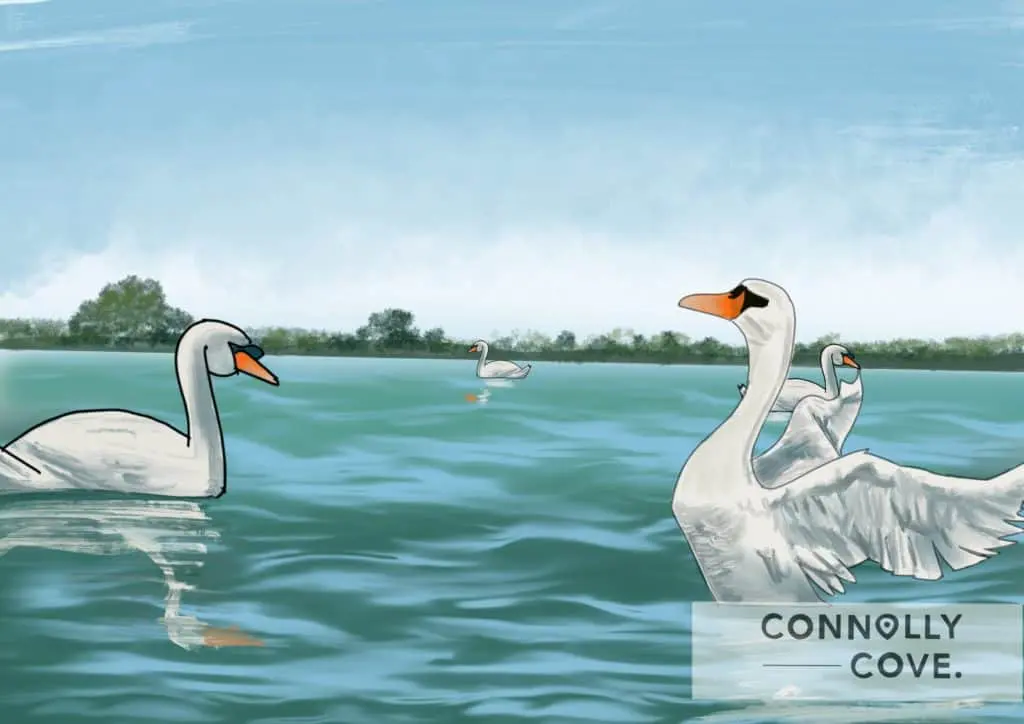
Kelpie
Kelpies are aquatic shapeshifters in Scottish mythology. Like the legend of the selkies, they take the form of animals, usually humans. Found along rivers and streams, the Kelpie has ill intentions towards humans and is something in folklore to be avoided.
What about Selkie Children?
Selkie children occupy a unique and poignant place in Irish folklore and mythology. According to legend, when a Selkie sheds its seal skin and transforms into a human, they may enter into romantic relationships with humans.
These unions, however, often lead to the birth of Selkie children, who inherit a dual heritage of both the terrestrial and the aquatic realms. The origin of Selkie children highlights the interconnectedness of the natural and supernatural worlds within Irish folklore, as well as the theme of forbidden love that permeates many of these tales.
The Struggle for Identity
Selkie children grapple with a profound struggle for identity, torn between two contrasting worlds. On one hand, they are bound to the sea, inheriting their parent’s affinity for the ocean, and on the other, they yearn for the warmth and familiarity of human society.
This internal conflict is a central theme in Selkie folklore, reflecting the universal human experience of trying to reconcile one’s heritage and individuality. The Selkie children’s quest for identity mirrors the broader Irish cultural narrative, where the sea plays a significant role in shaping the people’s sense of self.
The Enchantment of Selkie Children
Selkie children, like their parents, are believed to possess enchanting qualities, often attributed to their ethereal origins. They are said to possess an otherworldly beauty, charisma, and an innate connection to the natural world. In some tales, they inherit the gift of singing hauntingly beautiful songs, which can mesmerize those who hear them.
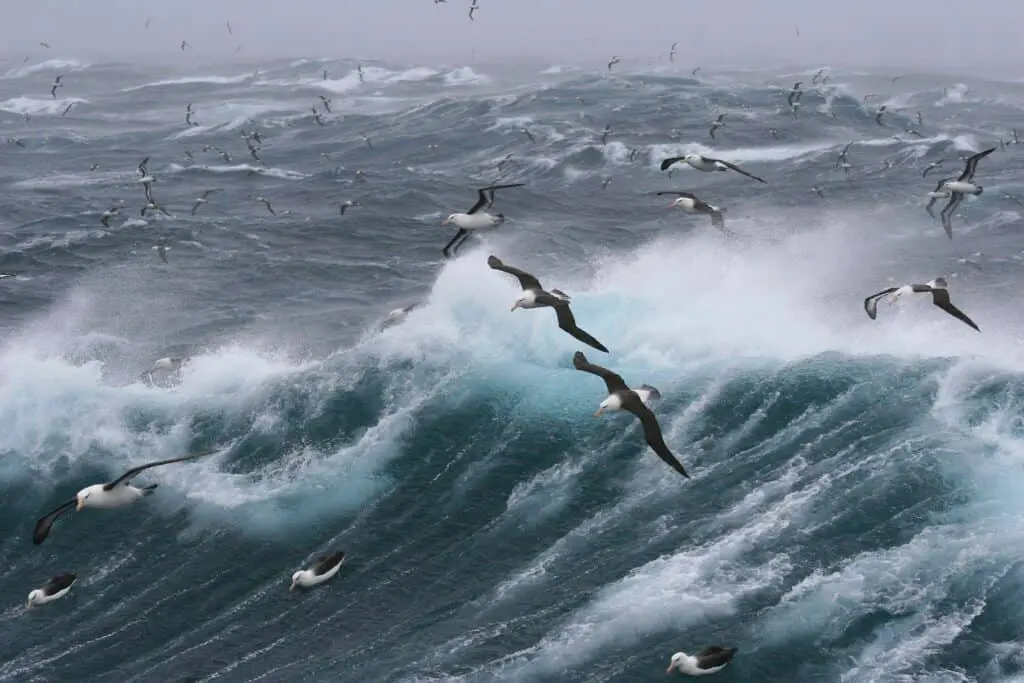
This enchantment is both a blessing and a curse, drawing others towards them but also making it difficult for Selkie children to lead ordinary lives. It underscores the idea that their existence is marked by a touch of magic, further emphasizing their status as beings caught between two worlds.
The Tragic Fate of Selkie Children
The stories of Selkie children are often imbued with a sense of tragedy and melancholy. Their hybrid nature makes them vulnerable to the whims of fate, as they may be summoned back to the sea when their Selkie parent reclaims their lost seal skin.
This separation from the human world, their families, and their own desires creates a bittersweet narrative of love and loss. The tragic fate of Selkie children underscores the themes of sacrifice and the inexorable pull of the sea, serving as a reminder of the unpredictability of life in the context of Irish folklore.
Additionally, children born between man and seal-folk may have webbed hands or feet. That trait can then be passed down to their descendants. Not only are they abandoned by their selkie parent, but they can be ostracised due to their inherited traits.
Selkie Children in Contemporary Culture
In contemporary culture, the concept of Selkie children continues to capture the imagination. These mythical beings are symbols of the enduring connection between the Irish people and their coastal heritage.
Selkie children have also found a place in literature, music, and art, where their stories are reimagined and retold, resonating with audiences worldwide. Selkie children, with their complex identities and timeless tales, continue to be a source of fascination and reflection, highlighting the enduring power of folklore to bridge the gap between the past and the present.
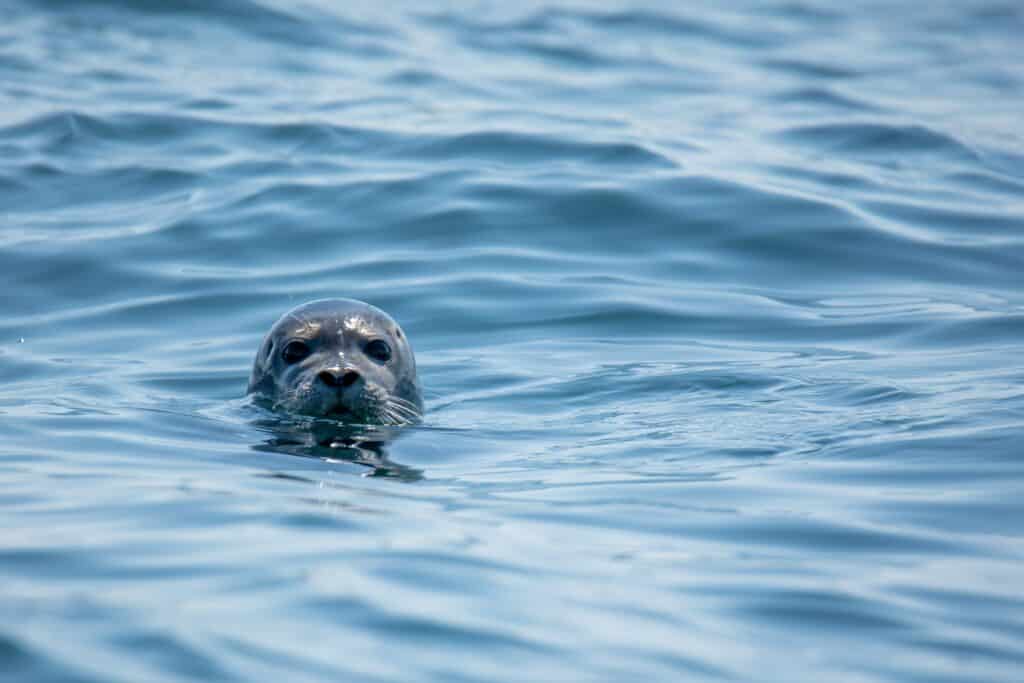
Superstitions Surrounding the Legend of the Selkies
Like any other supernatural tale, several superstitions are related to selkies. Superstitions surrounding the Legend of the Selkies in Irish and Scottish folklore and mythology have long added to the mystical aura of these enchanting creatures.
These beliefs are deeply rooted in these countries’ cultures, reflecting the age-old connection between the people and the sea. Selkies, with their shape-shifting abilities and otherworldly allure, have become a focal point for a wide range of superstitious beliefs that continue to intrigue and captivate.
Seal Skins as Powerful Artifacts
One prominent superstition associated with the Legend of the Selkies revolves around their sealskin coats, which are believed to hold powerful enchantments. In Irish folklore, it is said that if a Selkie were to lose or leave behind their sealskin, they would be unable to return to their aquatic form and would be bound to live as a human.
Thus, finding a discarded sealskin along the shoreline was seen as a rare and fortuitous event, as it bestowed upon the finder control over the Selkie’s fate. Such beliefs highlight the deep reverence for the ocean and its mysterious inhabitants.
The Perilous Consequences of Capturing Selkie Women
Another superstition warns of the dire consequences of capturing Selkie women, especially when in possession of their sealskin. In these legends, humans who take a female selkie’s coat are often subjected to a series of misfortunes, such as storms at sea, illness, or a lifetime of melancholy.
This superstition serves as a cautionary tale amidst the Legend of the Selkies. It reminds individuals of the importance of respecting the boundaries between the human and supernatural worlds and the potentially tragic outcomes of interfering with the lives of mystical beings.
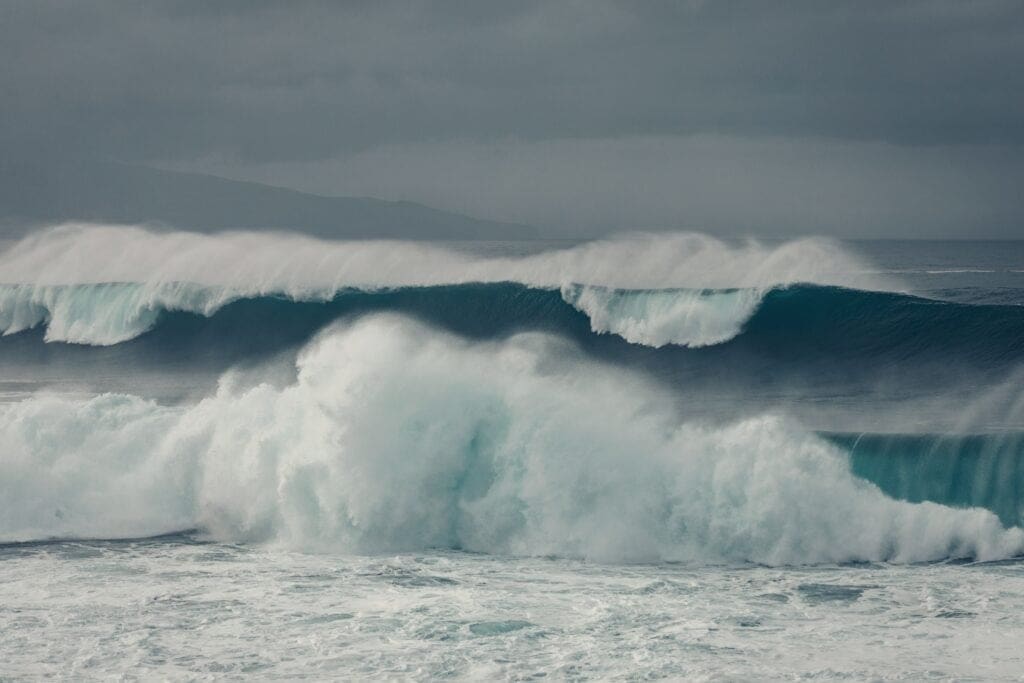
Selkies as Harbingers of Storms
Selkies are sometimes viewed as harbingers of storms and bad weather. Their appearance near coastal communities was often seen as an omen of impending tempests or turbulent seas.
This belief reflects the close relationship between the natural world and folklore, where the behaviour of sea creatures was observed and interpreted as signs from the spiritual realm. The superstition surrounding the Legend of the Selkies as storm-bringers serves as a testament to the respect and fear that the unpredictable ocean inflicts.
The Pinocchio Effect
We’ve all heard the story of Pinocchio, the young wooden boy who wishes he could be human and is finally granted his wish. Well, some legends say that selkies could turn human every so often when the conditions of the tides were correct.
This superstition contradicts other legends that Selkies could transform at will or once every 7 years. Instead, it connects the spiritual realm of these creatures with the real-world impacts of the ocean.
The Persistence of Selkie Superstitions
Despite the modernization of Ireland and Scotland and the decline of traditional superstitions, beliefs in the Legend of the Selkies and their mystical properties continue to endure in various forms.
From charms and amulets fashioned from sealskin to tales of Selkie encounters passed down through generations, these superstitions persist along with an enduring fascination with the Legend of the Selkies.
These superstitions not only provide a glimpse into the rich cultural heritage of Ireland and Scotland, but also serve as a reminder of the deep connection between their people and the untamed sea.
The Legend of the Selkies and its accompanying superstitions have shaped their beliefs and traditions for centuries.
Tales From All Over the World about the Legend of the Selkies
The old wives’ tales of selkies had their version for practically every island of Orkney. In one tale, a bachelor falls in love with a selkie and steals her skin. When he’s not around, she searches the house and finds her seal skin, thanks to her youngest daughter.
In Shetland, some stories bring us tales of selkies luring islanders into the sea, where the lovelorn humans never return to dry land. The sea-folk were also believed to revert to human shape and breathed air, but they had the ability to transform into seals as well. They did this using their seal skin, each of which was unique and irreplaceable.
The Scottish ballad The Great Silkie of Sule Skerry details the legend of the selkies’ shape-shifting nature:
‘I am a man upo’ da land;
I am a selkie i’ da sea.
An’ whin I’m far fa every strand,
My dwelling is in Shöol Skerry.’
In Iceland, Jón Árnason published the folk tale “Selshamurinn” (which translates to “The Seal-Skin”) that revolves around a man from Mýrdalur who forced a seal woman to marry him after stealing her seal skin. She finally discovers the key to her husband’s chest, finds her seal skin, and is reunited with the male seal, who is her betrothed partner.
A similar selkie story comes from the Faroe Islands and is titled The Legend of Kópakonan, as Kópakonan means “seal woman.
The story tells of a young farmer from the village of Mikladalur who, after learning about the local legend that seals could come ashore and shed their skins once a year on the Thirteenth Night, goes to see for himself.
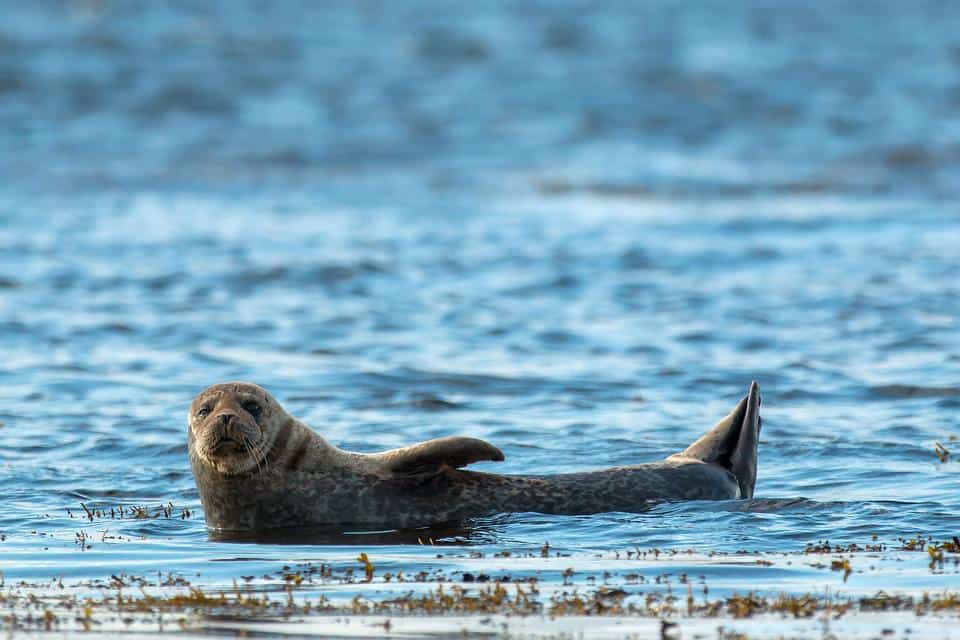
The farmer takes the skin of a young female selkie. She is unable to return to the water without her skin and is forced to follow the young man back to his farm and become his wife. The two stay together for many years, even producing several children. The man locks the selkie woman’s skin in a chest, keeping the key to the lock on his person at all times so his wife may never gain access.
However, one day, the man forgets his key at home and comes back to his farm to find that his selkie wife has taken her skin and returned to the ocean. Later, when the farmer is out on a hunt, the man kills the selkie woman’s selkie husband and two selkie sons. Enraged, the selkie woman promises vengeance for her lost kin.
She exclaims that “some shall be drowned, some shall fall from cliffs and slopes, and this shall continue until so many men have been lost that they will be able to link arms around the whole island of Kalsoy.” Deaths that occur on the island are thought to be due to the Selkie woman’s curse.
Origins of the Legend of the Selkies
You might wonder where these strange legends of the selkies and fairies came from and how they came to be. The Selkie origin is fascinating. Before the advent of modern medicine, many physiological and physical conditions were unexplainable, and physicians were unable to treat them. Consequently, when children were born with abnormalities, it was common to blame the fairies.
The MacCodrum clan of the Outer Hebrides claimed to be descendants of a union between a fisherman and a selkie, so they became known as the “MacCodrums of the seals”. This was an explanation for a hereditary growth of skin between their fingers that made their hands look like flippers.
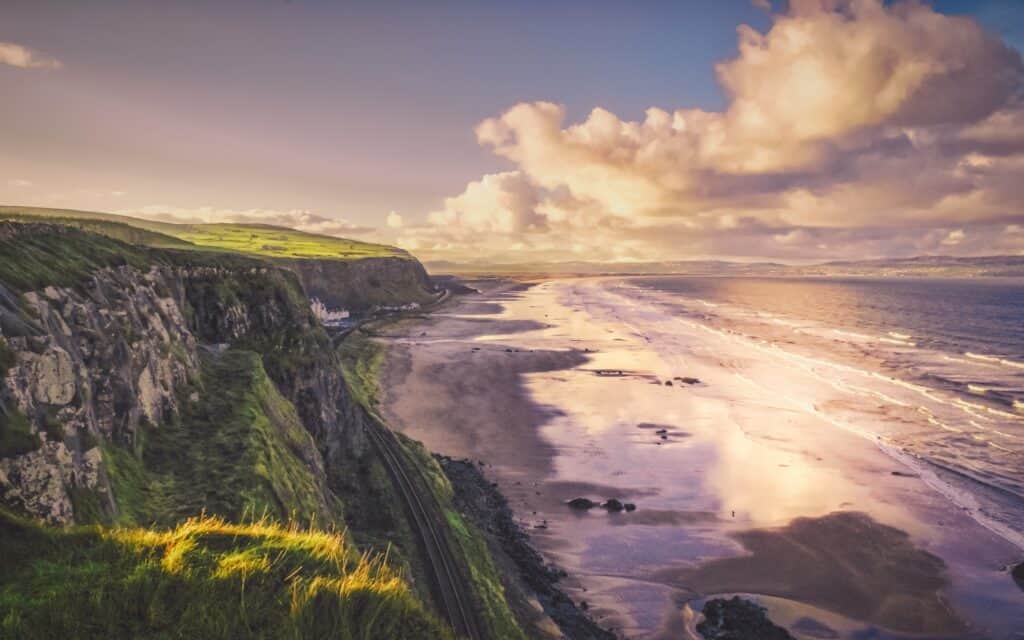
Children born with “scaly” skin were also thought to be the descendants of Selkies. These theories help root the legend of the selkies in reality.
Legend of the Selkies in Popular Culture
The legend of the Selkies has appeared in numerous works of pop culture, such as novels, songs and films, including A Stranger Came Ashore, a young adult novel by Scottish author Mollie Hunter. The plot takes place on the Shetland Islands in the north of Scotland, and it revolves around a boy who must protect his sister from the Great Selkie.
The Secret of Roan Inish, a 1994 American/Irish independent film based on the novel Secret of the Ron Mor Skerry by Rosalie K. Fry, follows a young girl who uncovers the mystery of her family’s Selkie ancestry.
A 2000 Australian made-for-TV film titled Selkie also portrayed the story of a teenage boy who begins to notice changes in his body, such as growing scales and webbed fingers. The changes suggest he is somehow connected to a legendary line of Selkies.
Perhaps our favourite adaptation of the Legend of the Selkies is Ondine, a 2009 Irish romantic drama film starring Colin Farrell.
The film was shot on location in Castletownbere, Ireland, and it discusses the possible existence of the mythological selkies through the story of an Irish fisherman. One day, he comes upon a woman in his fishing net, and his precocious daughter begins to believe that the mysterious woman might be a selkie.
The Selkie Meets High Fashion
Kimberley Gordon, born in the UK before moving to California, was inspired by the legend of the Selkies, so much so that she designed a clothing collection.
Gordon was inspired by the idea of the selkie woman who was captured and forced to marry a human. The selkie’s eventual escape represented the idea of finding yourself in a trapped situation and regaining your freedom by starting again. The dress has become a viral hit, hopefully allowing more people to learn about the fascinating marvel that is Celtic folklore.
More on the Legend of the Selkies
So, are selkies real? The legend of the selkies has been around for hundreds of years. Maybe we’ll never find out if there any trace of truth to them, but just like the myth of the Loch Ness Monster, people will never stop looking into it and searching for the truth behind the legends.
In the meantime, the mythological stories are totally fascinating. They can be found everywhere around Ireland, Scotland and many countries in Northern Europe. Other intriguing stories like the legend of the selkies are those such as Ireland’s most powerful supernatural race, the Tuatha de Danann, or the fairies and monsters they encountered.
Since most myths are based on realistic stories, I guess we can assume that the myths of the selkie folk can have a basis in reality as well. Whether due to mysterious illnesses or unexplained disappearances, the legend of the Selkies might be more realistic than we think.
Note: there are many different spellings of ‘Selkie’ including, selkie folk, selkie fowk, seilkie, sejlki, selky, silkey, silkie, saelkie, sylkie. In Irish Gaelic, Selkies are sometimes referred to as séala (seal), murdúch (mermaid) or merrow (anglicized version). They are sometimes called the seal woman myth.
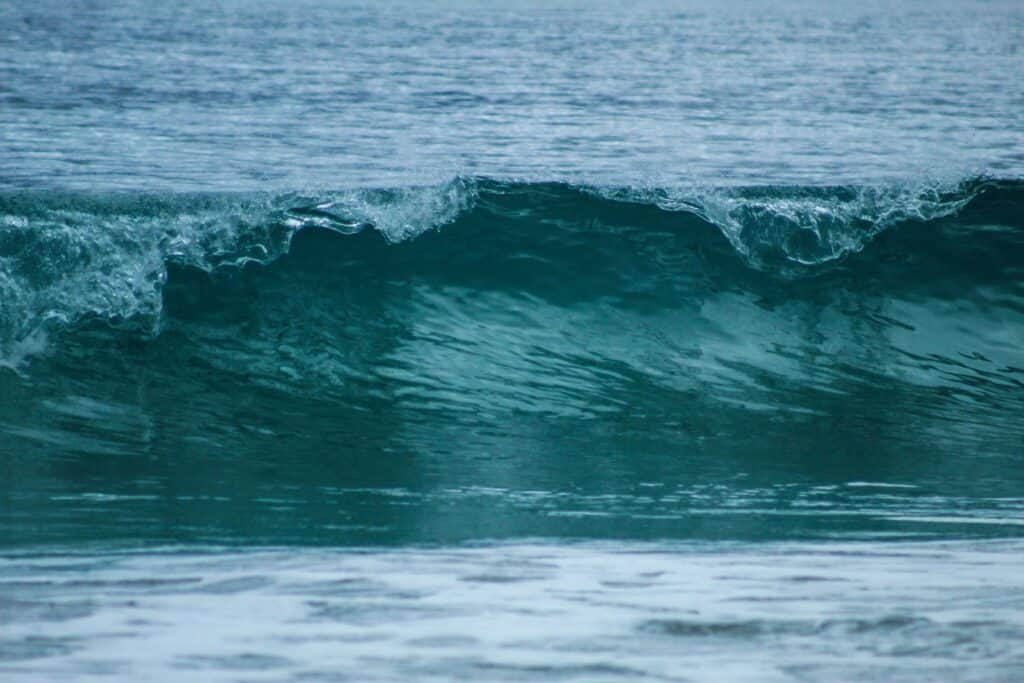
Frequently Asked Questions about the Legend of the Skelkies
What is a Selkie in Mythology?
The legend of the Selkies is Ireland’s and Scotland’s take on a mythological marine creature, similar to mermaids, sirens and swan maidens in other cultures. It is a creature that takes the form of a seal in the water but is able to take off the seal skin on land and emerge as an irresistible human to land dwellers.
What is the Legend of the Selkies?
The Legend of the Selkies tells the tale of a female selkie who washed to shore. A human man found her and stole her seal skin, trapping her in a human form. The selkie marries the man, and throughout her captivity, she longs to return to her true home in the sea. The selkie woman always gazes longingly at the ocean as she is determined to make her way home.
What does ‘Selkie’ mean?
The word ‘Selkie’ derives from the Scottish word selch, which means grey seal.
Can Selkies be male?
Although most stories revolve around female selkies, selkies are not only female. There are also tales of male selkies who are said to have very handsome human forms, as well as seductive powers that are irresistible to human women. Unlike their female counterparts, who are often captured by humans, male selkies usually intentionally lure humans to the sea.
What Mythology does the Selkie Belong to?
Selkies appear in Celtic mythology as well as Norse mythology. However, a human that can change into a creature by wearing their skin is a common motif in the folklore of cultures all around the world, including Germany, Iceland, Asia and North America.
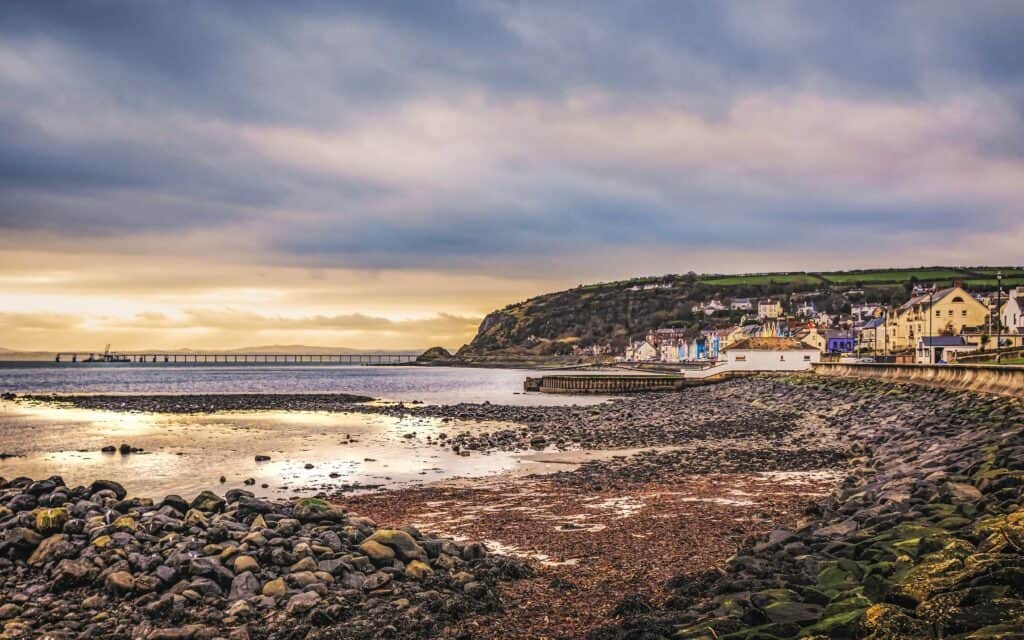
Do Selkies have Powers?
Selkies have the ability to transform from human to seal by wearing a seal skin. Each skin is unique to the individual selkie. They are known for their irresistible looks when in human form. They also have all of the traits and abilities of humans.
Where do Selkies Live?
Selkies are typically found along the coasts of Scotland and Ireland in mythology.
Are Selkies the Same as Mermaids?
While they share some similarities, selkies and mermaids are distinct creatures in mythology. A big difference between Selkies and Mermaids is that when selkies leave the water, they shed their seal skin and become fully human. This contrasts with the traditional mermaids who transform their seal tails into human legs.
Are Selkies Fairies or Fae?
Selkies are sometimes considered fairies or fae due to their supernatural abilities. However, this is just one of many theories in Celtic and Norse mythology about how the Selkies came to be. They are also thought by some to be either humans who had committed sinful wrongdoing or fallen angels.
What is a Selkie Dress?
Kimberly Gordon was inspired by the Legend of the Selkies when designing her fashion collection. She was especially partial to the idea that people can rediscover their freedom when they overcome their challenging circumstances.
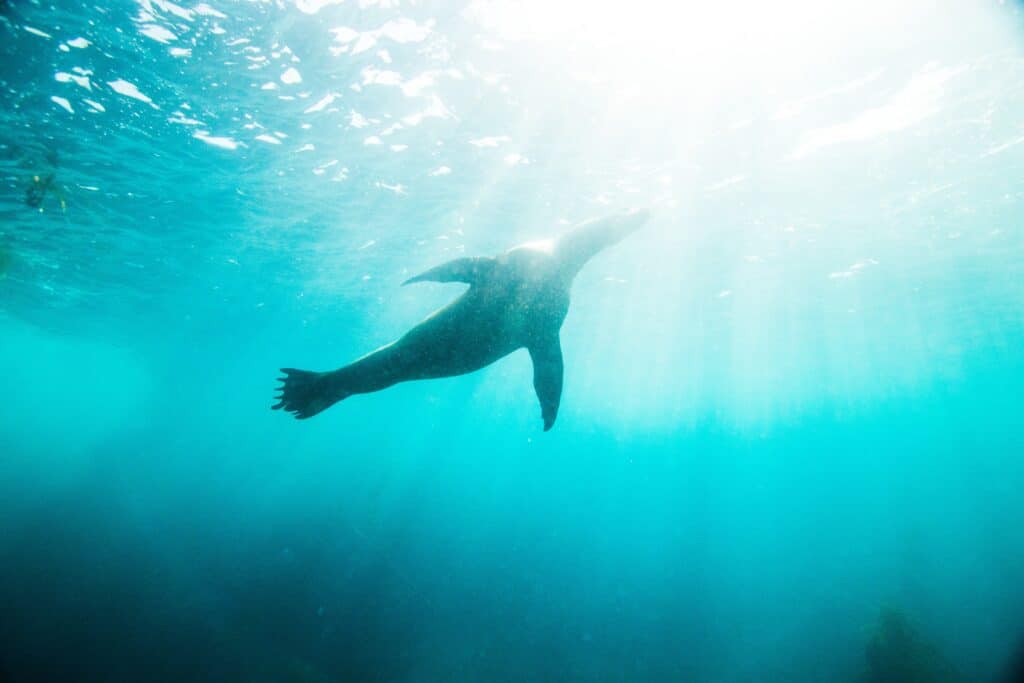
The Legend of the Selkies Lives on Today
In the realms of Irish and Scottish folklore and mythology, the Legend of the Selkies showcases the enduring power of storytelling and the deep, mystical connection between humanity and the vast oceans that border these lands.
Through centuries, captivating tales of the Legend of the Selkies have told stories of enchantment, love, tragedy, and transformation. They provide a glimpse into the hearts and souls of those who call the rugged coastlines of Ireland and Scotland their home.
The Selkies, with their ability to seamlessly navigate between the worlds of seal and human, are metaphors for the complexities of identity and belonging. In the Legend of the Selkies, we find reflections of our own desires, our own yearnings for freedom, and our own sacrifices for love.
The tales highlight the enduring magic of folklore, where stories passed down through generations continue to captivate and inspire. They remind us that even in a world increasingly dominated by science and technology, there is a deep human need for mystery, wonder, and a connection to the natural world.
The Legend of the Selkies persists as a testament to the resilience of cultural heritage and the power of storytelling to bridge the gap between the past and the present.
Have you ever heard of the Legend of the Selkies? Let us know in the comments below.
If you enjoyed this blog on the Legend of the Selkies Mythology, you can find more Mythology Blogs by ConnollyCove here: Fairy Glen | Irish Legend of the Children of Lir | Leprechauns Ireland | The Myth of the Clurichaun | Scáthach: The Most Infamous Warrior






